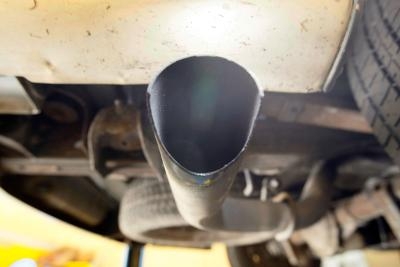
Your Ford Ranger's exhaust sound profile is affected by four factors. The most significant is the engine size. Depending on the model year, you could have a small four-cylinder engine or a larger six-cylinder. The greater the displacement of the engine, the more volume of exhaust gas produced. Assuming your engine will remain the same, changing the sound output of your Ranger will require exhaust system modifications. Exhaust tips, muffler design and exhaust pipe sizes will all directly affect the tone and volume of your Ford Ranger.
Install an exhaust tip designed to amplify sound. Exhaust tips are welded, clamped-on, or otherwise attached to the tailpipe. Tips that have dual walls, flared ends or increase in diameter from the point of connection to exhaust will amplify the exhaust sound output. Greater diameters have a deeper resonance.
Install an after-market muffler designed to deepen the tone or amplify the sound of the exhaust. Throaty sounds can be achieved through the installation of glass packs, straight pipe exhausts and straight-through muffler designs. Performance exhausts typically will provided deeper tones while also increasing the performance of the vehicle due to improved exhaust throughput from the engine. When selecting a muffler to increase the throatiness of the exhaust, select a design that does not include sound dampening chambers or one that significantly increases the volume of gas which passes through the muffler.
Replace the exhaust pipe on your Ford Ranger. Increasing the diameter of the exhaust pipe by 1/2-inch to 1-inch will deepen the tone of the exhaust without degrading the performance of the exhaust system. Exhaust pipe size changes are best done at the same time as muffler exchanges to minimize total costs.
Weld the exhaust system hangers directly to the chassis of the Ford Ranger. Vibration transfer from the exhaust system will be better felt and heard in the cabin. If you desire increased exhaust presence without increased cabin noise, ensure the exhaust hangers are free-floating or have rubber connections to dampen vibration transfer.